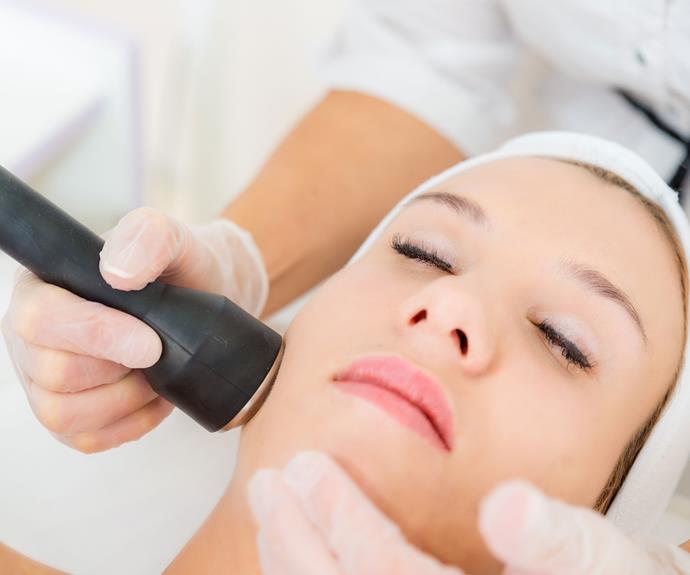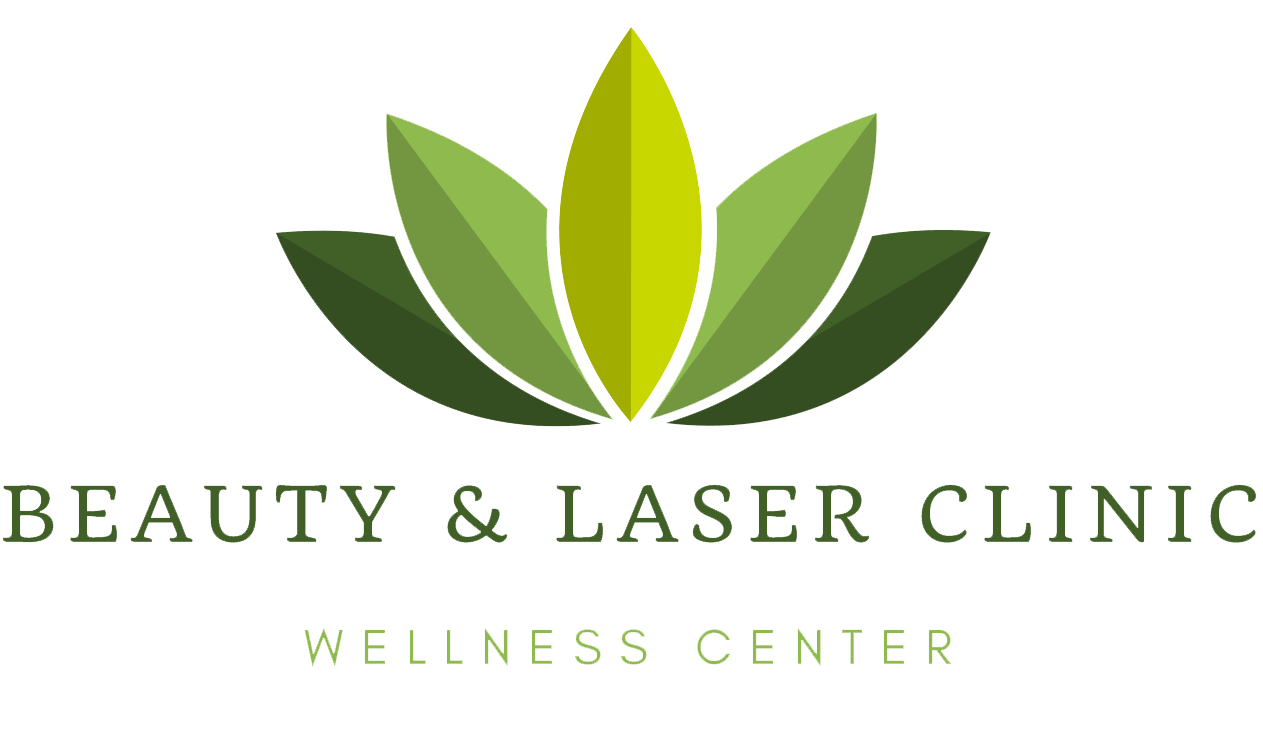How lasers can fix your skin

Two decades ago, laser technology was still in its infancy. Long down-times, nasty side- effects and high costs prevented many from undergoing laser and light therapies.
Today, these treatments are a booming trend –often used to assist with hair and tattoo removal, and to treat a range of skin concerns, including acne, hyperpigmentation and wrinkles.
“Laser and light and related treatments are a rapidly evolving and exciting area, with new treatments and devices becoming available,” says Sydney dermatologist Dr John Sullivan. “Best results often involve tailored treatments combining laser and light treatments at the same time.”
Those seeking a non-invasive way to enhance skin appearance will often explore the realm of lasers.
This is because laser treatments are safer and more effective than they were in the ’90s, provided they are used by trained professionals.
“Lasers are not highly regulated in Australia, which means anyone can buy and use the machines,” says Sydney dermatologist Dr Eleni Yiasemides. “In untrained hands, they can cause scarring and permanent pigment changes. Treatments on the face should be done in a doctor’s clinic.”
Different uses of lasers
When it comes to lasers, it’s not a one-size-fits-all – what works for one person may not work for another. This largely depends on the severity of the problem being treated, the skin tone of the person and the different laser wavelengths. Here’s our guide to the latest laser treatments and how to know if they will work for you.
Ablative and non-ablative lasers
Lasers are divided into two main groups: ablative (which remove the top layer of skin) and non-ablative (which don’t damage the skin’s surface).
“The ablative lasers are more expensive and have a higher rate of complications, and should only be used by a doctor,” says Dr Yiasemides. “Ablative lasers include the erbium and carbon dioxide lasers. They are ablative to the skin and create better results than non-ablative, but have a longer down-time [usually two weeks] and more risks of scarring and permanent pigment change of the skin – like white marks [hypopigmentation].
“These days, they are usually fractionated [only a percentage or fraction of the skin area] to reduce side-effects and down-time. They are good for acne scars and photo-ageing of the skin, and can reduce wrinkles, uneven skin tone and improve the complexion.”
This type of laser is better suited to fairer skin types, as darker skin tones are more prone to permanent whitening of the skin.
Non-ablative lasers include all the Intense Pulsed Light (IPL) machines, vascular, pigment and hair removal lasers. “These are generally safer compared to the ablative lasers, but still carry risks,” explains Dr Yiasemides.
These include mild redness and changes in skin colour. Although these lasers have less down-time, patients usually need multiple treatments for best results.

Fat removal
New laser treatments claiming to reduce stubborn body fat are popular in clinics around Australia. One of these is SculpSure – a laser treatment which was approved for non-invasive lipolysis of the flanks and abdomen in Australia in November 2015 and has also been cleared by the US Food and Drug Administration (FDA).
According to a clinical study of 100 patients, the treatment can reduce the fat layer thickness by up to 24 per cent. Over time, the body naturally eliminates the disrupted fat cells and results take between six to 12 weeks.
It has no down-time, but there can be slight discomfort during the procedure. Each treatment takes only 25 minutes.
Post-treatment side-effects can include tenderness in the treated areas and mild redness that lasts a few hours.
Prices are approximately $500 for a small area (two applicators) and $1000 for a large area (four applicators).
Hair removal
Laser hair removal involves a direct beam of light on the hair follicle, inhibiting the hair’s ability to grow, without disrupting or damaging the skin’s surface.
“Laser hair removal is the fast, gentle and effective way to remove unwanted hair with permanent results,” Aleesha Paul from Laser Clinics Australia says. “We use medical grade Candela GentleLase Pro and GentleYag Pro. The Candela GentleLase Pro is designed to work for clients with dark hair and lighter skin, while the GentleYag Pro works best on a darker skin tone. Darker hair types work best; blonde, silver or red hair cannot be treated with laser. Laser works by emitting one single wavelength of light, maximising laser penetration to the targeted area. It is attracted to dark pigment on and within the skin.”Between eight and 12 treatments are usually required for permanent results. Hair removal is relatively pain-free and is best done in winter, as sun exposure must be avoided for two weeks pre- and post-treatment. Prices range from $60 per treatment (for areas on the face) to $400 (for full body).

Tattoo removal
According to Dr Yiasemides, the new picosecond lasers for tattoo removal >are common. Yet multiple treatments are needed and won’t effectively clear tattoos that contain green, some reds and yellow.
“It is extremely painful and generally requires anaesthetic,” she says. “[The] main issues are scarring and permanent hyperpigmentation.”
This treatment starts at $150 and can increase to $1500 per treatment, depending on the size of the tattoo.
Acne
If prescription creams or antibiotics aren’t working, laser might be an acne treatment option.
“Although often used to treat acne, intense pulsed light (IPL), light and lasers have only led to limited short-term benefits and have not been an effective long-term control therapy,” says Dr Sullivan.
“The benefits, however, of light and laser can be enhanced and prolonged by pre-treating the skin with a light-active gel prior to illumination, such as is seen with the newly TGA [Therapeutic Goods Administration] approved Kleresca BioPhotonic acne treatment,” he says.
“[The] treatment safely and painlessly provides longer term [six or more months] clinically significant benefits in even relatively severe acne. This involves the application of a gel to affected areas followed by illumination under a multi-wavelength high-intensity in-clinic LED light for nine minutes twice a week for six weeks. The light-active gel treatment kills the bacteria that cause acne and enhances the skin’s recovery and healing response. There is no down-time.” Dr Sullivan says significant benefits usually take several weeks.
About 12 treatments are needed at about $200 per session.
Anti-ageing
Lasers can improve the appearance of wrinkles, fine lines and dark spots caused by sun damage. One of the greatest appeals is that these treatments don’t involve injectables.
“Lasers really help improve the complexion, texture and tone of the skin,” says Dr Yiasemides. “Most women benefit more from laser compared to Botox and fillers. Women with smooth, even, unblemished complexions are perceived to look more youthful and healthy compared to those who don’t have good complexions.”
According to Dr Sullivan, IPL works in a similar way to laser, delivering a range of wavelengths which allows multiple skin changes to be targeted at the same time.
“By adjusting the wavelengths of light used, along with the pulse duration and energy, IPL can have a broad range of beneficial skin effects,” he says. “A medical IPL can reduce capillaries plus redness and, at the same time, also address freckles, uneven pigment, age spots, shrink pores and have a general skin rejuvenating effect.”
IPL ranges in price from $150 to $500 for a full face.
If you have one particular problem, such as broken capillaries, vascular laser may be more beneficial.
This works by emitting a single wavelength of light in a focused, synchronised pulse.
“They can be used to selectively target a specific skin change or condition,” explains Dr Sullivan. “This allows the laser to destroy the lesion being treated while leaving the surrounding tissue unharmed.”
Vascular laser treatments range from $150 to $300 for the face.
To improve collagen, Dr Yiasemides recommends Fraxel and Emerge lasers.
“They use fractionated technology to send laser heat down the dermis to help improve the collagen and elastin in skin,” she says. “They are great for tightening the skin, reducing fine lines, improving the complexion, toning and reducing the size of pores.”
These types of lasers are more painful and can range from $400 to $1000, depending on the area treated.
Stretch marks
Stretch marks are caused by a lack of collagen and elastin during times of intense growth. These scar-like streaky areas that appear in over-stretched skin can be tough to get rid of.
“Stretch marks generally improve with time,” says Dr Sullivan. “For those with recent red stretch marks, vascular laser and IPL can be good options; for older stretch marks, non-ablative fractionated laser.”
Although mildly painful, it will help remove redness and regenerate the skin’s natural collagen. Fractional laser treatments for stretch marks can range from $400 to $1000, depending on the area treated.
This story originally appeared in the May issue of The Australian Women’s Weekly.
